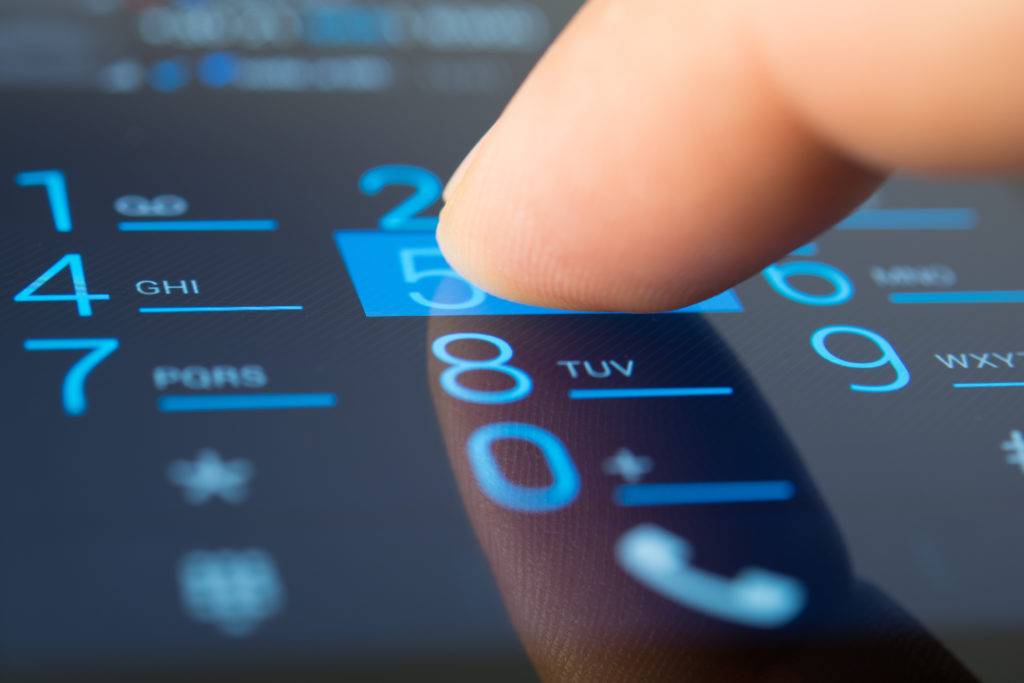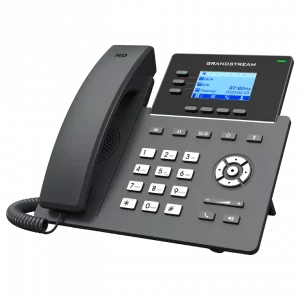
988 Dialing: What It Means for Carriers and PBX Administrators
988 – The New Suicide Prevention Lifeline
In 2018, the U.S. government approved a national three-digit emergency number dedicated specifically for people contemplating suicide. The Suicide Hotline Improvement Act of 2018 directed multiple federal organizations to work together to analyze the current national suicide prevention and mental health crisis hotline system and alternative options, including a simpler hotline number.
After years of debate, negotiations, research and feedback, the chosen new, easy to remember number is 988 and when dialed, will automatically route the caller directly to one of 170 crisis centers that make up the National Suicide Prevention Lifeline. The Federal Communications Commission (FCC) is requiring all carriers to ensure their networks are capable of directing all 988 calls to Lifeline by July 16, 2022.
The FCC believes the two-year transition period will give carriers ample time to make the necessary network changes, as well as educate the public on the new number. The hope is 988 will become as second nature for people in a suicide crisis as 911 is for people in general crisis. The general nature of 911 is precisely what drove the decision to dedicate a separate number specific to suicide. Instead of callers having to go through a 911 triage and be routed to an experienced counselor, all of which consumes precious time, the 988 number will connect them directly to a professional without the wait.
Why Not 911 or Another N11 Number?
In 2018, Congress passed and President Donald Trump signed into law the directive for the FCC to research the use of a dedicated suicide line that would eliminate the need for callers to remember the current 10-digit Suicide Prevention Lifeline crisis center. A three-digit number would be easier to recall, particularly during a mental crisis.
As part of the analysis phase, the North American Numbering Council (NANC) studied various options, considering alternate three-digit numbers that replaced the “9” in “911” with another digit. This unknown digit is referred to as “N”. A major issue they faced was the fact that many other N11 numbers are already in use, including 2,3,4,5,6,7 and 8. For instance, 211 is already reserved for community services and referral services. The chart below, provided by the FCC, lists the current N11 numbers and their respective call volumes.
| Table 1: Usage of Existing N11 Codes (As Reported by Approximately 34 Service Providers) | |||
| N11 Code | Total Calls:Dec. 1, 2018 to Feb. 28, 2019 | Estimated Total Annual Calls | Percentage of Total N11 Calls |
| 611 | 74,163,403 | 296,653,612 | 48.81% |
| 911 | 43,974,408 | 175,897,632 | 28.94% |
| 411 | 17,793,381 | 71,173,524 | 11.71% |
| 311 | 6,405,646 | 25,622,584 | 4.22% |
| 211 | 4,406,436 | 17,625,744 | 2.90% |
| 511 | 3,398,581 | 13,594,324 | 2.24% |
| 811 | 1,383,094 | 5,532,376 | 0.91% |
| 711 | 406,943 | 1,627,772 | 0.27% |
| Total | 151,931,892 | 607,727,568 | 100.00% |
Because re-purposing any of these N11 numbers would create extensive education and delays, the committee determined it would be more beneficial and timely to designate a wholly new three-digit number. Callers will still be able to dial the original 10-digit number to reach the suicide hotline, however, the 988 number provides an alternative that will likely be more widely used as education becomes more widespread.
Suicide by the Numbers
In the United States, there is a death by suicide approximately every 11 minutes. The U.S. Centers for Disease Control (CDC) reports that suicide is the 10th leading cause of death in the U.S. and the second leading cause of death for Americans ages 10-34.
The American Foundation for Suicide reports that out of the 1.4 million suicide attempts in 2018, more than 48,000 Americans died by suicide. The CDC’s National Center for Health Statistics tracks suicide rates every three years and their most recent report found the age-adjusted suicide rate in the U.S. in 2017 was 33% higher than the rate in 1999.
Since the COVID-19 pandemic, calls into the current suicide prevention hotline has increased dramatically, by 300% in some areas of the U.S., according to the Suicide Prevention Resource Center. Crisis call centers play a pivotal role in de-escalating as many as 95% of calls.
The Need for 988
Having a toll-free hotline to seek help with suicidal thoughts is often the last resort. Timing is critical as callers can often be on the verge of harming themselves. Any delay in reaching help could result in needless deaths. For others who are only thinking about suicide, the hotline provides valuable, free counseling that has proven to be successful in halting the progression of suicidal thoughts into action. A simpler 988 number shortens the amount of time a caller can connect with a trained professional.
CNN quoted the FCC chairman, Ajit Pai, as saying, “My hope is that by establishing a government-backed 988 suicide and mental health three-digit dialing code, on par with the 911 dialing code all Americans know for emergencies, we will send a powerful signal that there is nothing shameful about seeking help in times of crisis. That it’s a sign of strength, not one of weakness. We will let people know that they are not alone.”
What 988 Means for Carriers and Administrators
According to the FCC’s Report and Order, the FCC is requiring “all telecommunications carriers and interconnected VoIP providers to implement 988 by transmitting calls initiated by an end user dialing 988 to the current toll free access number for Lifeline…We also require one-way VoIP providers to implement 988. Providers of telecommunications and interconnected VoIP services [must] take appropriate and timely action to implement this requirement.” Each telephone company will incur the costs of upgrading their systems as there is no planned federal subsidy to do so.
Once carriers and providers program the network switches, it will be much easier and faster to route 988 calls to a single, national crisis number, ensuring callers receive the same level of service and fast response without the risk of misdirected calls.
The FCC says, “We proposed requiring that covered providers implement 988 in their networks within 18 months of publication of the final order in the Federal Register. Covered providers must overcome two primary hurdles that drive our need to provide time for implementation. First, such providers must implement 10-digit dialing in the 87 area codes that continue to permit 7-digit dialing and also use 988 as a central office code. Second, such providers must reprogram, upgrade, translate, or replace those switches that would not otherwise support 988 as a 3-digit dialing code. We set a uniform implementation deadline of July 16, 2022 to minimize the time for 988 implementation to help address the growing epidemic of suicide in this country as quickly as possible.”
The FCC recognizes the rollout of 988 dialing will require extensive network adapting, including upgrading or replacing switches to accommodate software and programming changes. The FCC estimates only 12% of legacy switches will need to be replaced. Even so, the FCC reports that legacy carriers are concerned about upgrading or replacing legacy switches due to a general lack of trained personnel who are experienced in upgrading and replacing legacy switches. The process may need to be done across geographically large swatches of providers’ networks and would require extensive planning and testing.
Another issue is that there are still areas of the country are still using seven-digit telephone numbers. If any of those numbers begin in 988, the system will direct the call to the hotline. Providers in these areas will need to transition these users to 10-digit dialing before the 988 dialing to the crisis hotline can be implemented.
The big national carriers, namely AT&T, Verizon, T-Mobile U.S, and Sprint, will share the burden of upgrading and replacing switches across the country with smaller carriers that rent bandwidth from them. The national carriers will inevitably have the resources to bring their networks into compliance, however, smaller carriers, as well as telecommunications dealers and resellers, and all voice providers must also comply with the FCC mandate. Partnering with a cloud SIP trunking service provider or a SIP trunk reseller will ease the transition and ensure compliance.
PBX is included in the regulation, requiring administrators to configure the phones to immediately route 988 calls. Whether the phone system is in a private hotel room, and office conference room, a mobile device, a retail space or anywhere else, all providers must ensure a 988 caller will be immediately connected to the suicide hotline. Depending on the PBX configuration and Internet Protocol (IP) phones, administrators will need to modify the dial plan and digit mapping. This means the following:
- [2-9]11 rule: x11 are dialed immediately
- OT: Local operator rule: After dialing “0”, the phone pauses T seconds and then completes the call automatically.
- 988: 988 rule: 988 is dialed immediately
- 011xxx.T: International rule without prefix
- 91[2-9]xxxxxxxxx: LD rule with prefix
- [1-8]xx: A regular 3-digit extension is dialed immediately (“9” excluded as a prefix)
As an example, modifying this digit map would require modifying it to:
[2-9]11|988|OT|011xxx.T|91[2-9]xxxxxxxxx[1-8]xx
Each handset vendor will have specific requirements for modifying digit maps to ensure 988 is routed immediately to the PBX. It will still be necessary to modify the dial plan of the PBX to ensure the call is routed through the PBX to a carrier capable of connecting the call with the Lifeline service. Dial plans are unique to each PBX, but administrators will need to ensure that when the PBX receives a call destined for 988, that call is routed out of the correct trunk in accordance with their carrier’s requirements to utilize the Lifeline service.
While the backend efforts to enable rapid 988 dialing are extensive, the value to the public is immeasurable. Carriers are playing a pivotal role in connecting callers in crisis with trained professionals who can be there when seconds count.


